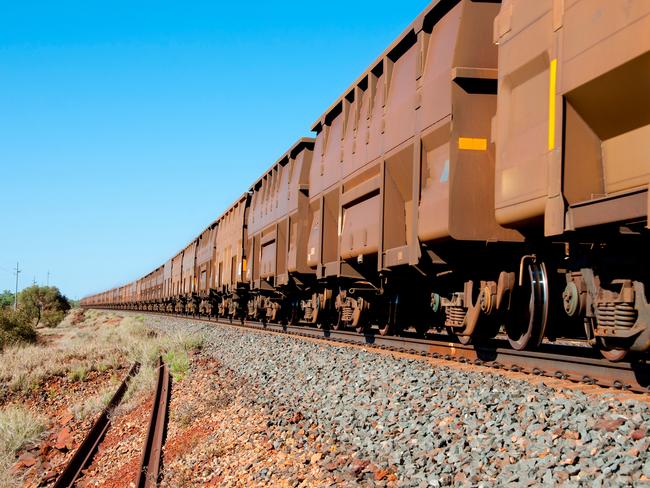Inland rail: Costs could exceed $20 billion as project based on ‘inadequate’ business case
The Melbourne-Brisbane inland rail will likely cost more than $20 billion due to planning failures, a scathing inquiry has found.

Costs for the Melbourne-Brisbane inland rail will likely hit more than $20 billion, while poor management and consultation have “significantly undermined” trust in the project.
A scathing Senate report – entitled ‘Inland rail: Derailed from the start’ and tabled to parliament this week – says delivery of the landmark rail line is governed by an out-of-date business case with costings that were “inadequate” from the start, leading to a failure to properly plan and implement the $14.5 billion project.
The Labor-led Senate committee is calling for a full updated business case review and a dedicated oversight inquiry to keep an eye on its construction – two measures which Coalition senators have already opposed.
The report has been welcomed by NSW Farmers and the Country Women’s Association of NSW, who together sought legal advice on dealing with the Australian Rail Track Corporation after repeatedly raising concerns with the agency’s community consultation processes.
NSW Farmers inland rail task-force chair Adrian Lyons said it was the first time the group felt their issues had been heard.
“ARTC have continually had a ‘crash or crash-through’ mentality when it comes to the execution of this project. Well today, they have crashed – in a major way,” Mr Lyons said.
CWA NSW chief executive Danica Leys said the report vindicated their concerns, calling the project a “basket case of mismanagement and budget blowouts”.
The Federal Government promised $8.5 billion for the 1700km track in 2017, which was then estimated to cost about $10 billion in total. But costs have already escalated, with the Government allocating another $5.5 billion to the project in December last year.
The Senate committee was told parts of the line’s construction had been underestimated by more than three times, compared with the 2015 business case, and costs were predicted to now exceed $20 billion.
“Whether inland rail’s 2015 business case remains valid in light of the substantial increase in capital required for its completion is a key question,” the report stated, adding that parts of the route were yet to be finalised.
“The committee continues to be confused as to how a business case can be relied upon if the end point of the inland rail, and therefore the costs involved, are still to be decided.”
The report also questioned why the Federal Government insisted on a “arbitrary” 24-hour journey time, as that requirement had restricted ARTC from looking at other alignments that might better benefit regional communities.
It said there were “significant shortcomings” in ARTC’s engagement with landholders, and questioned why the route’s end point in Brisbane had still not been finalised.
“It is a failure of the Australian and Queensland governments for this uncertainty to remain, despite over a decade of investigation into the Inland Rail corridor,” it read.
The committee made 26 recommendations, including:
Setting up an ongoing inquiry for oversight of the project;
An independent review and update of the 2015 business case;
Integrate the rail project with the National Freight and Supply Chain Strategy;
Investigate options to extend the line to the Port of Gladstone, in Queensland, and review the Narromine-Narrabri alignment in NSW; and
Appointing an independent mediator to improve ARTC’s relationship with NSW Farmers and CWA, and improve local consultation processes.
Coalition senators opposed five of the 26 recommendations, as well as the report’s title: “The more appropriate title is that Labor has been determined to derail Inland rail from the start.”
The Government members stated calls for an oversight inquiry were unnecessary as the committee could question ARTC during Senate estimates three times a year, and did not support a review of the business case.
“A review, assessment or update of this business case would significantly impact the progress and stakeholders involved in the project, which is now well underway,” they said.

